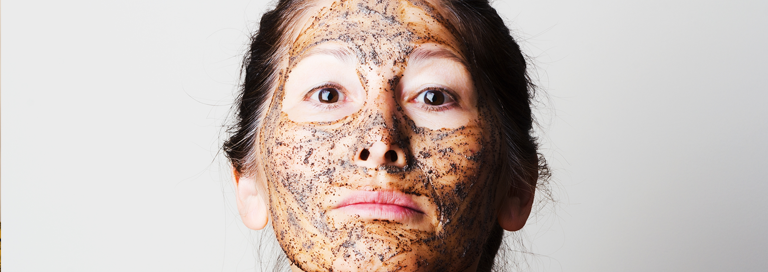
Exfoliating facial scrubs and masks have been around forever…
The ancient Egyptians are believed to have invented the practice. They ground up alabaster stone and combined it with sour milk to create the first exfoliating scrub and mask.
Native Americans used pulverized corn cobs, as well as sand scooped from the bottom of riverbeds.
Exfoliating not only removes the tired, dead cells on your skin’s surface, it also speeds up the skin renewal process. This allows new healthy cells to take their place.
For decades, cosmetic companies added tiny bits of manmade particles called microbeads to scrubs and masks. But these cheap bits of plastic were banned in most countries because they polluted our rivers, lakes, and oceans – as well as our food supply.
It’s a good thing they were outlawed. But unfortunately, skin care companies simply replaced one cheap ingredient with another.
Today, these scrubs contain ground up shells, fruit pits, and volcanic rock. They’re marketed as safe, all-natural alternatives. But, in reality, they are harsh, abrasive materials that cause damaging micro-tears to your skin.
These scratches gradually weaken your skin’s natural “hydro-lipid barrier.” This film is composed of water and fats. When that barrier is torn, moisture escapes. That leaves your skin dry and irritated.
Signs of a damaged moisture barrier include:
- Dry, flaking skin
- Redness
- Peeling
- Itching
- Acne and other breakouts
- Roughness
- Crepiness
- Wrinkles
These damaging ingredients also leave your skin prone to bacterial and fungal diseases.
I don’t use harsh exfoliants at my clinic. To gently revive and renew skin, I rely on kaolin clay. It gives my patients’ skin a flawless finish.
You see, clay has unique electromagnetic qualities. The molecules in the natural clay have a negative charge. When it comes into contact with your skin, the charge binds to toxins and other impurities. It actually pulls them out through the pores of your skin.1
Kaolin clay also has high levels of silica. That helps remove dead skin cells to clear the way for skin to regenerate.
This makes kaolin clay perfect for a facial mask. When you apply it to your face, it deeply cleans and purifies your skin. It removes blackheads, whiteheads, and softens skin.
Other types of clay can be too harsh for your face. But this China clay is gentle. It does not strip the skin of natural oils like some other clays can. And it has unique minerals like iron, magnesium, calcium, sodium, and zinc that nourish skin.2
And kaolin’s natural electromagnetic charge also increases blood circulation to give your skin a healthy glow.
Make Your Own Kaolin Clay Facial Mask
I advise my patients to use a clay mask once or twice a week. Here’s a simple recipe you can make at home.
Ingredients:
- 2 tablespoons kaolin clay
- 2 tablespoons rosehip seed oil
- 3 drops geranium or lavender essential oil
Directions:
- Mix all ingredients in a small ceramic bowl. If the paste is too thin add more clay.
- Apply evenly to a damp, clean face with your fingertips.
- Let it dry for 5 minutes for sensitive skin, or 15 minutes for normal or oily skin.
- Wash with warm water then pat face dry with cloth.
- Apply your regular serum or moisturizer.
To Your Good Health,

Al Sears, MD, CNS
1. M. “Bentonite clay as a natural remedy: A brief review.” Iran J Public Health. 2017 Sep; 46(9): 1176–1183
2. Moosavi M. “Bentonite clay as a natural remedy: A brief review.” Iran J Public Health. 2017 Sep; 46(9): 1176–1183.








